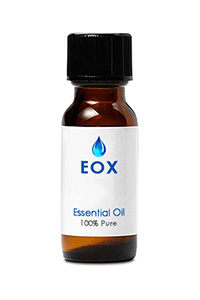New ArrivalsGift Ideas Specials Contact Us

WINTER 5% OFF SALE!
SITEWIDE05
Simply enter the above coupon code and save 5% on your ENTIRE ORDER!
Use PayPal, cash, or checks! NO LIMIT!

Now In: CATEGORIES → Essential Oils → 15ml Bottles → Essential Oil - Petitgrain
Botanical name: Citrus aurantium Color: Pale yellow to amber Consistency: Thin Perfumery note: Top Related planets/deities: Sun Aroma: Floral, citrusy, with a woody-herbaceous undertone Energetic Properties: Uplifting, calming Aromatherapy properties: A pale yellow to amber liquid with a fresh-floral citrus scent and a woody-herbaceous undertone. It blends well with rosemary, lavender, geranium, bergamot, bitter orange, neroli, labdanum, oakmoss, clary sage, jasmine, benzoin, palmarosa, clove bud, and balsams. Spiritual uses: The clarifying scent of petitgrain oil refreshes the senses, and may relieve confusion, anxiety, mental fatigue and depression. Petitgrain oil is suitable for use before meditation to clear the mind and alleviate the effects of negative emotions like anger, shock and fear. Thought to inspire strength and commitment, petitgrain oil may also be blended with reassuring neroli oil for people who are experiencing sadness or a lack of self-confidence. Blends well with: Balsam, Benzoin, Bergamot, Bitter Orange, Clary Sage, Clove, Geranium, Jasmine, Labdanum, Lavender, Neroli, Oakmoss, Palmarosa, and Rosemary. History: Petitgrain oil is actually distilled from the leaves and twigs of the same species (Citrus aurantium) that produces neroli and bitter orange oils. Probably native to the Middle East, petitgrain oil is now produced in several Mediterranean countries such as France, Italy, Tunisia and Morocco, as well as in the United States. The medicinal uses of bitter orange appear in the medieval writings of Gerard, who prescribed the warm juice of the bitter orange to treat worms and scorpion stings. Greek physician Theophrastus also recommended layering citrus rinds into clothing before storage to repel moths. Petitgrain is a French term meaning “little grain” and refers to the former practice of extracting the oil from from unripe, cherry-sized bitter oranges, called “grains”. |
|
|||||||
|
|||||||





